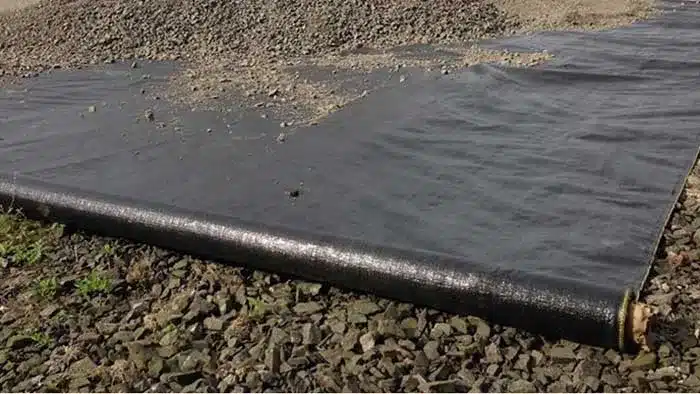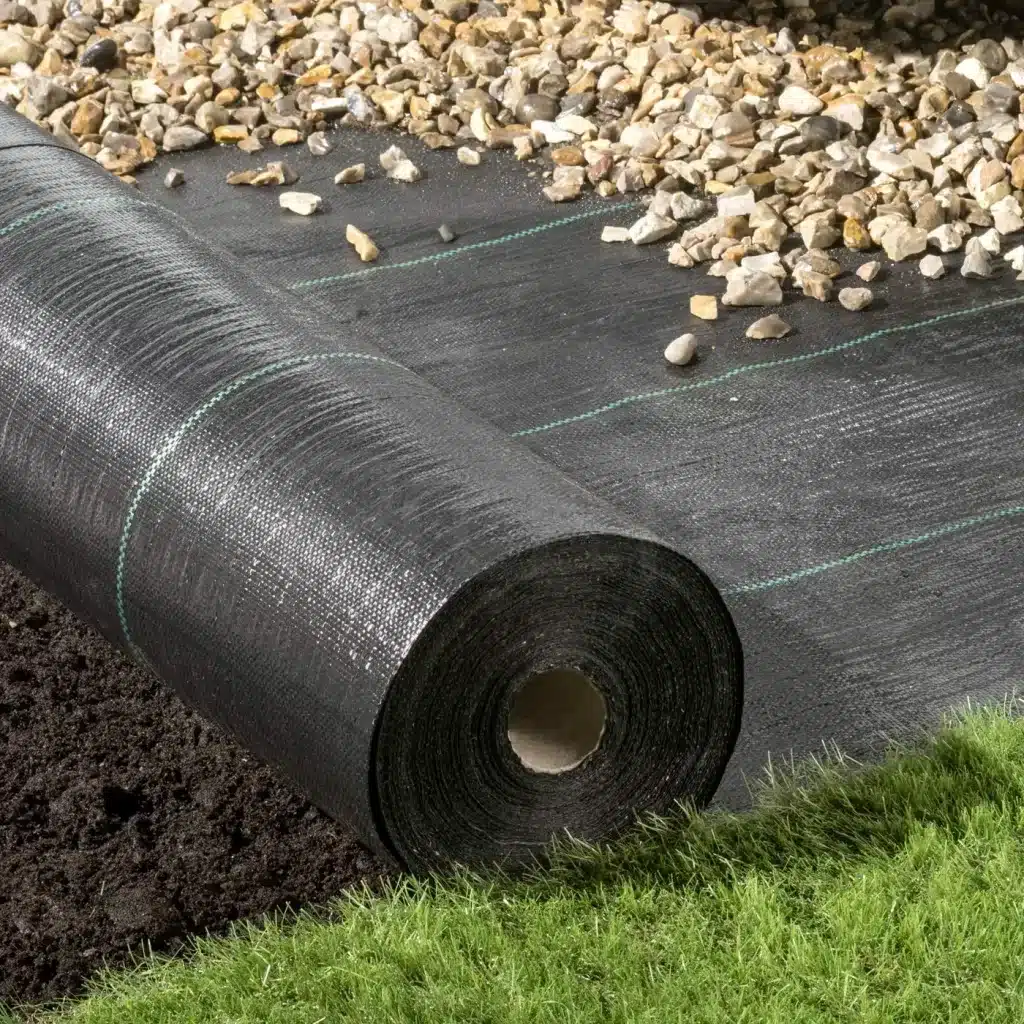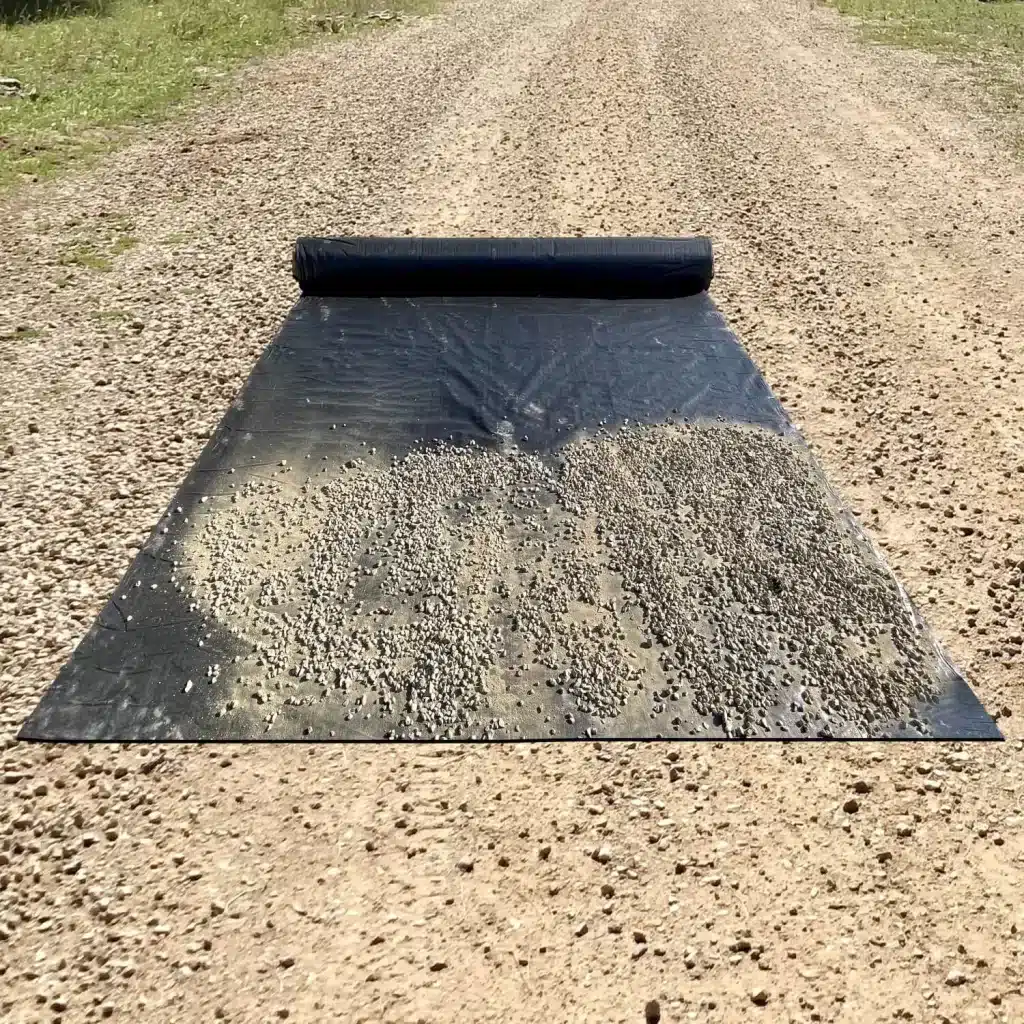+86-159 9860 6917
info@geofantex.com
geofantex@gmail.com
+86-400-8266163-44899
Driveway fabric is an excellent option for driveways as it provides a stable support base, effectively preventing the formation of potholes and ruts. Our woven fabric is specifically designed for high durability, allowing efficient water drainage without causing any damage to the driveway while providing exceptional stabilization.

What is driveway fabric called?
Driveway Fabric Overview
Name: Driveway fabric is typically called geotextile fabric or landscape fabric. This material is widely used in driveway construction due to its ability to improve stability, support drainage, and prevent weed growth.
Functions:
- Drainage Support: Geotextile fabric is porous, allowing water to pass through, which prevents pooling and enhances drainage.
- Weed Prevention: It creates a barrier that stops weeds from growing through the gravel or pavement, maintaining a cleaner, more durable driveway.
- Stabilization: By creating a layer between the soil and the driveway base, the fabric helps to distribute the weight and reduces movement in the soil, which can prevent driveway cracking and sinking.
Composition: Most geotextile fabrics are made from synthetic materials like polypropylene or polyester fibers. These materials are woven or non-woven into sheets that are strong, durable, and resistant to decomposition. The woven type is often preferred for driveways, as it provides better stabilization.
Applications in Driveway Construction: Geotextile fabric is placed directly over the soil before adding gravel or other base layers. It’s also used under pavers and concrete to reinforce the driveway’s foundation. By enhancing load distribution and supporting proper drainage, it extends the lifespan of the driveway and reduces maintenance needs.
Do you need to lay fabric under the gravel driveway?
Yes, it is generally recommended to lay fabric, such as geotextile fabric, under a gravel driveway. The fabric serves several important purposes:
- Prevents gravel from mixing with the soil: Geotextile fabric acts as a separation layer, preventing the gravel from sinking into the soil over time, which helps maintain the stability and level of the driveway.
- Enhances drainage: The fabric allows water to pass through while preventing soil erosion, ensuring proper drainage, and reducing the risk of water pooling or damaging the driveway base.
- Increases durability: By keeping the gravel layer intact and preventing soil from mixing with the gravel, the geotextile fabric helps prolong the lifespan of the driveway.
- Weed control: Laying fabric can also help suppress the growth of weeds through the gravel surface, reducing maintenance efforts.
In summary, using geotextile fabric under a gravel driveway improves longevity, drainage, and stability, making it a valuable addition to the construction process.
What does driveway fabric do?
Driveway fabric, also known as geotextile fabric, plays a crucial role in enhancing driveway durability, managing drainage, and preventing structural issues. Here’s a breakdown of its main functions and benefits:
Preventing Weed Growth: Driveway fabric serves as an effective weed barrier by blocking sunlight from reaching the soil, preventing weed seeds from germinating and growing through the driveway surface. This helps maintain a clean, weed-free surface and reduces the need for herbicides.
Improving Drainage: Geotextile fabric is permeable, allowing water to pass through but preventing soil particles from mixing with gravel or other base materials. This feature is vital in managing proper drainage, as it prevents pooling on the driveway and helps keep the base dry, reducing erosion and promoting stability.
Supporting Stability and Reducing Erosion: By separating the soil from the gravel base, driveway fabric increases the structural stability of the driveway. It minimizes soil displacement, reduces the formation of potholes, and maintains an even surface. This support extends the driveway’s lifespan and reduces maintenance costs by preventing washouts and structural shifting.
Types of Driveway Fabric
- Woven Geotextile Fabric: Known for high tensile strength, this type is typically used for driveways that need strong support under heavy loads, like larger vehicles or machinery.
- Non-Woven Geotextile Fabric: This type is more suited for drainage due to its higher permeability, making it a better choice for areas prone to high moisture levels.
- Composite Fabrics: These combine properties of both woven and non-woven fabrics for versatility in situations requiring both high strength and effective drainage.
Considerations for Installation
- Site Preparation: The driveway surface should be cleared of any large rocks, roots, or debris to avoid puncturing the fabric.
- Proper Overlapping: Overlap the edges of the fabric to ensure complete coverage, preventing any soil seepage into the gravel.
- Anchoring: Use stakes or similar methods to secure the fabric in place, particularly on sloped areas, to maintain stability during installation.
- Gravel Base: After placing the fabric, add a layer of gravel or another base material on top, ensuring even distribution for optimal load-bearing support.
Driveway fabric enhances the durability and longevity of driveways by providing stability, improving drainage, and preventing weed growth. The choice of fabric depends on load requirements and drainage needs, with installation steps to ensure proper functionality. This fabric ultimately reduces maintenance costs and extends the life of the driveway by supporting a stable, well-drained foundation.
What is the best landscape fabric for gravel driveways?
With a thickness of 1.8 ounces per square yard, it’s sturdy enough for use underneath gravel and rocks. Meanwhile, the needle-punched fabric is very permeable, allowing water and air to pass through to keep the soil moist.



Get Free Sample
We’ll respond as soon as possible(within 12 hours)






















